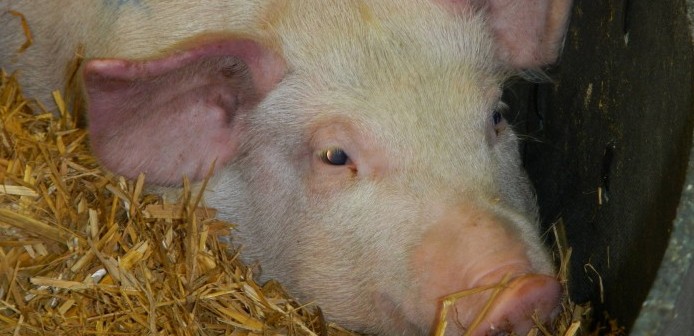African swine fever, until 10 years ago largely confined to Africa, is now very much a global disease affecting all corners of the pork industry. Alistair Driver summarises the impact it is having, directly or indirectly, in different parts of the world
NORTH & SOUTH AMERICA
THE US
The US is expected to be a major beneficiary of increased Chinese export demand – the USDA is forecasting a 5% overall hike in export volumes this year. Producers are asking the US Congress for a further 600 inspectors at points of entry, after officials seized one million pounds of meat illegally imported from China in New Jersey in March.
CANADA
Canada saw a big surge in exports to China in the first quarter of this year. At the start of April, Canada introduced new rules on feed imports to protect against ASF.
ARGENTINA
In April, it was announced that Argentina has now been approved to export pork to China from 25 plants.
BRAZIL
As a major pork exporter Brazil is expected to benefit significantly from China’s import demand – the USDA forecasts a 23% rise in 2019. However, exports of soya from Brazil are being hit badly by reduced export demand. Monitoring of food products at airports was stepped up in autumn 2018 to protect the pig sector.
WESTERN EUROPE
Prices have been soaring in major pig producing countries due to extra Chinese demand. The EU has introduced a co-ordinated regionalised approach to ASF outbreaks.
BELGIUM
The virus was detected in wild boar near Belgium’s border with France in September 2018. It has since been found in more than 700 wild boar in the restricted zone, although the rate of confirmed cases is slowing.
ITALY
ASF has been endemic in the island Sardinia for 40 years. It has not been detected in mainland Italy.
DENMARK
In January, Denmark started building a 70km (43-mile) fence along its border with Germany in an effort to keep out wild boar.
THE UK
ASF has never been found in the UK. APHA rates the risk of the virus entering the UK as ‘medium’, although the risk of the pig population being exposed to it remains ‘low’, dependent on high levels of biosecurity.
AFRICA
ASF was first documented in Kenya in 1921 and, with a few exceptions remained largely restricted to Africa until well into this century. Outbreaks are now relatively rare in Africa – there were just 56 recorded, all in domestic pigs, with 40,000 pigs lost, from 2016 to 2018, mainly in central and southern Africa.
SOUTH AFRICA
In early April, South Africa detected an outbreak on a farm in North West province. It is reported that the outbreak may be linked to contact with wild animals.
ZIMBABWE
Zimbabwe is the only other country in Africa to have an outbreak recorded by the OIE in recent months.
EASTERN EUROPE
In April, cases were recorded in Bulgaria, Estonia, Hungary, Latvia, Lithuania, Moldova, Poland, Romania, Russia and Ukraine. However, only Romania (61), Ukraine (7) and Poland (1) recorded cases in domestic pigs between January and March. This compared with seven countries in the summer of 2018. However, cases in wild boar appear to be increasing.
RUSSIA
An estimated two million pigs have been killed in Russia as a result of ASF, although there have only been a handful of cases in recent months. In April, the virus was discovered in sausages imported from China.
ROMANIA
Romania has the biggest ASF problem in Europe, with more than 1,000 cases in domestic pigs since July 2018.
POLAND
Poland has record more than 1,700 outbreaks in wild boar since July. While it has implemented culling policies, it is now reconsidering plans to build a fence on its eastern border.
CZECH REPUBLIC
In February, the Czech Republic became officially ASF-free. The virus was found in wild boar in June 2017, but no cases have been recorded for a year.
ASIA
CHINA
ASF has spread across the whole of China since it was confirmed there for the first time in August 2018. Government figures show China’s sow herd was 21% down year-on-year in March. Productivity is forecast to drop by anything from 10% to 35%, equating to a potential shortfall of 200m pigs. Increased Chinese pork import demand is already pushing up global pig prices.
MONGOLIA
Mongolia reported its first cases of ASF in January. Since then 11 outbreaks in six provinces have been reported, involving more than 100 farms/households.
VIETNAM
The first case in Vietnam was confirmed in February, near the Chinese border. The disease has since spread across the country, reaching 24 provinces in March, with 85,000 pigs culled. However, no new cases were reported in April.
CAMBODIA
Cambodia reported its first case in backyard pigs in Ratanakiri, near the Vietnam border, in early April. It notified OIE of three further outbreaks in the province between April 12 and 25.
JAPAN
In early April, the virus was detected in a contagious state for the first time in sausages brought in from China, prompting Japan to strengthen measures against illegal imports.
TAIWAN
The Taiwan authorities have found the ASF virus in checks at airports, including in sausages from China, on a number of occasions.
NORTH AND SOUTH KOREA
There are unconfirmed reports that the virus has been found in North Korea. The South Korean authorities have stepped up checks after the virus was found at an airport in sausages from China, in March.
AUSTRALIA
Since December, ASF has been detected in 46 pork products seized by officials at international airports and mail processing centres, as Australia steps up its efforts to keep the virus out of pigs.




